What are the 7 wonders of the ancient world? This question has been posed by travelers since the 2nd and 1st century B.C.
The list contains the most remarkable structures that have ever existed in human history. These are constructions of classical antiquity that have both impressed and captivated a lot of people.
The first lists were created by Greek travelers who marked down “sights” that must be seen. It was not until the Renaissance period that the list featured the same wonders.
Only one of the seven wonders of the ancient world is still standing, so it has been replaced with a new list of 7 Wonders of the World in the 21st century.
In this post, we’ll answer just 1 question: What are the 7 wonders of the ancient world?
Temple of Artemis at Ephesus
The Temple of Artemis at Ephesus was located about 75 kilometers (47 mi) south of what we call Izmir, Turkey, today.
The temple was completed around 550 B.C. and it took over 120 years to build it. Artemis was the Goddess it was dedicated to, which was the ancient Goddess of the hunt, the wilderness, wild animals, the Moon, and chastity.
The temple of Artemis was huge. It was 425 feet (about 129 m) long, 225 feet (almost 69 m) wide, and supported by 127 60-foot (about 18 m) high columns.
Described by anybody that saw it with complete awe and amazement as the most beautiful structure ever created, it was the very reason for its destruction.
On July 21, 356 BCE a man named Herostratus set fire to the temple.
His reason?
Gain eternal fame and recognition by destroying something so beautiful.
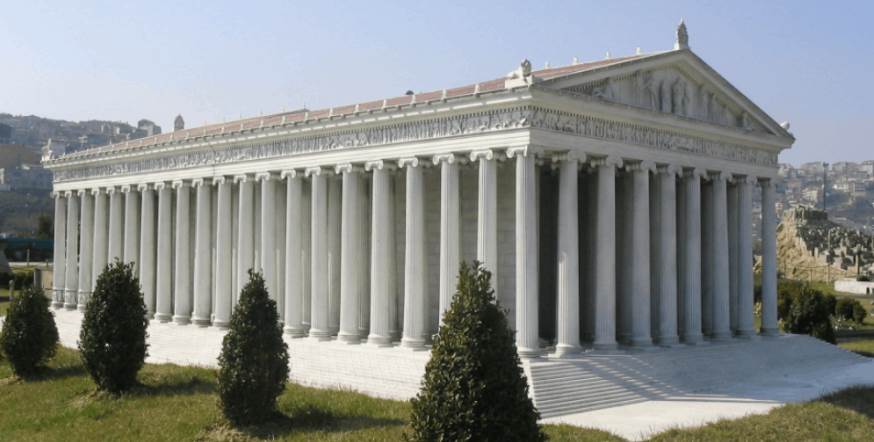
Lighthouse of Alexandria
The Lighthouse of Alexandria was built by the Ptolemaic Kingdom in Egypt during the reign of Ptolemy II Philadelphus around the year 280 B.C.
It has been estimated that it stood about 100 meters (330 ft) tall, making it one of the tallest man-made buildings built in ancient times. It was located on the island of Pharos.
It was ultimately destroyed by two severe earthquakes, one in 956 A.D. and one in 1323 A.D.
In 1480, the stones from the remaining ruins were used to build the Citadel of Qaitbay another famous attraction in Egypt on the same site.
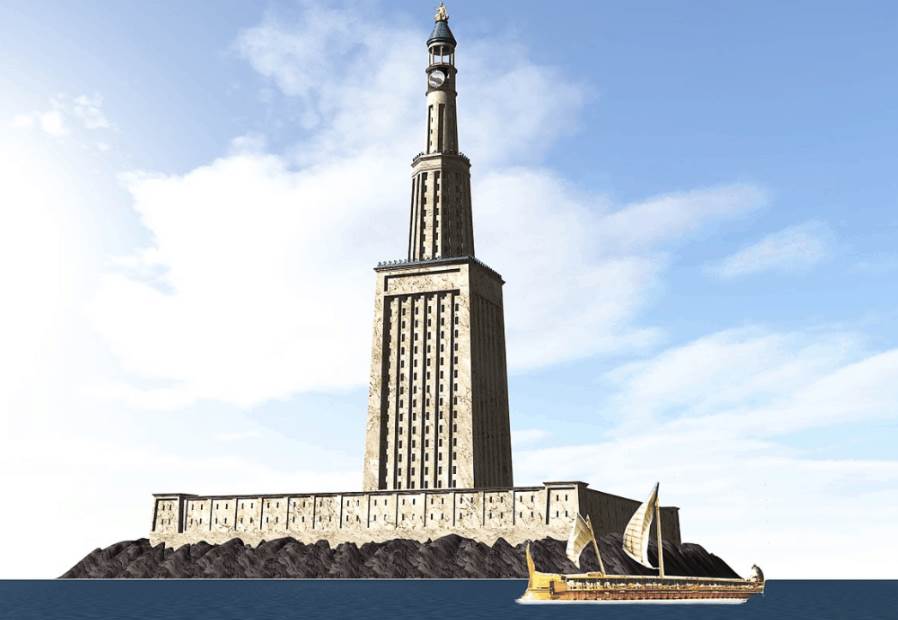
Colossus of Rhodes
The island of Rhodes once had its patron, a sun God named Helios. It was a massive statue standing 33 meters (110ft) tall that was built in the city of Rhodes on the Greek island.
The construction of the Colossus of Rhodes was led by Chares of Lindos, a native of the island of Rhodes. It started in 292 B.C. and laster for nearly 12 years to be completed in 280 B.C.
An interesting fact about the Colossus of Rhodes is that the Statue of Liberty in New York was modeled after it. Unlike popular belief, the legs of the statue stood together on a base.
The statue was destroyed by a massive earthquake in 226 B.C. which means the colossus of Rhodes only stood for about 54 years.

Mausoleum at Halicarnassus
The Mausoleum at Halicarnassus is also referred to as the “Tomb of Mausolus” and was built around 350-353 B.C.
It was built for a governor of the Persian Empire called Mausolus and his sister Artemisia II of Caria. The current word for a mausoleum, which means a tomb/grave which is located above the ground, is derived from the Mausoleum at Halicarnassus.
The structure itself was an elevated building, standing about 45 (148ft) meters tall, and was decorated with sculptures and reliefs on all sides.
It was the longest-standing of the 7 wonders of the ancient world that were destroyed, as it was only destroyed by earthquakes between 1200-1500 A.D. It’s the reason we now refer to an above-ground tomb as a mausoleum as well.

Statue of Zeus at Olympia
The Statue of Zeus at Olympia was an enormous seated statue depicting the God Zeus. It was located inside the Zeus near the Olympia sanctuary on the Peloponnese peninsula in Greece.
This is the place where the first “Olympic Games” were held as well. The statue itself was created by the Greek sculptor Phidias in the year 435 B.C.
The statue was commissioned by the Eleans, who wanted to outdo their Athenian rivals. The Athenians just erected their statue of Athena Parthenos in the Parthenon after all.
How the statue was destructed remains unclear. One theory suggests that it was taken to Constantinople and destroyed in the great fire of the Palace of Lausus, in 475 AD. Others proclaim that it was simply destroyed together with the temple it was in.
We also don’t know exactly how it looked apart from mentions in Greek literature and depictions on coins.
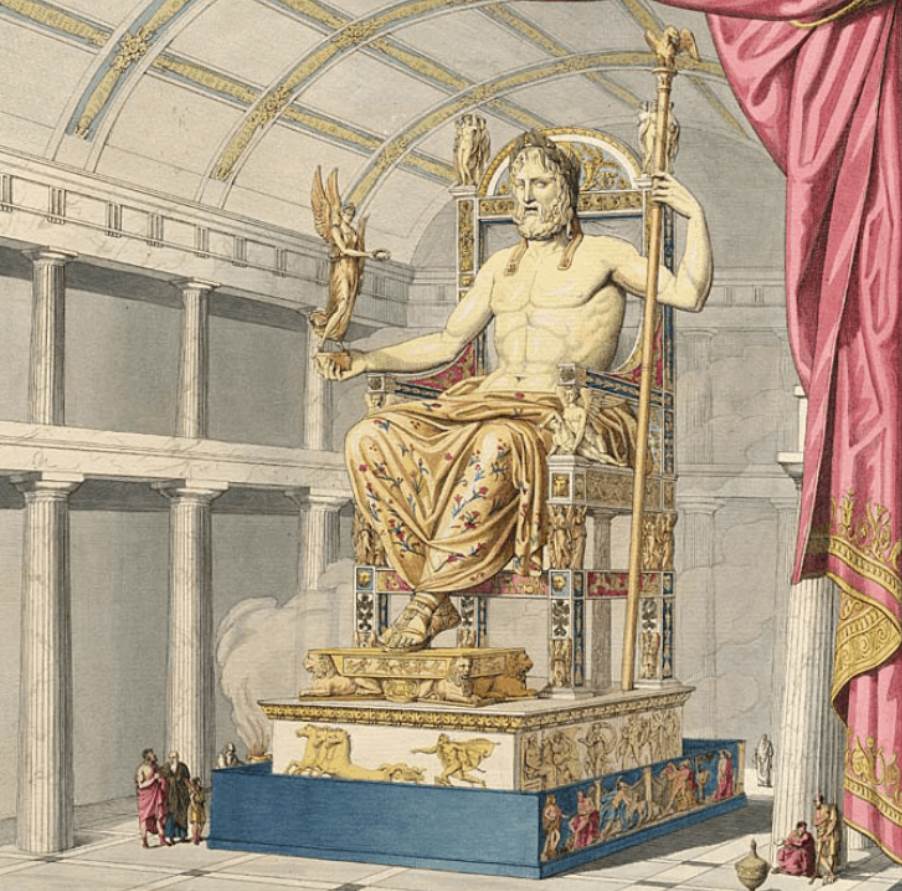
Hanging Gardens of Babylon
The Hanging Gardens of Babylon are the only of the 7 wonders of the ancient world of which its existence can’t be verified.
The gardens were supposedly located in the ancient city of Babylon in current-day Iraq and built by the Neo-Babylonian King Nebuchadnezzar II. We know that this King ruled between 605 and 562 BC.
A legend mentions that they were built alongside a palace named “The Marvel of Mankind.” the reason was that his wife Queen Amytis, who was median (current day Iran), missed the trees and flowers of her home country.
Various theories on whether or not this explanation is true are still being discussed, and without definitive evidence, the existence of this Mesopotamian structure remains speculation.
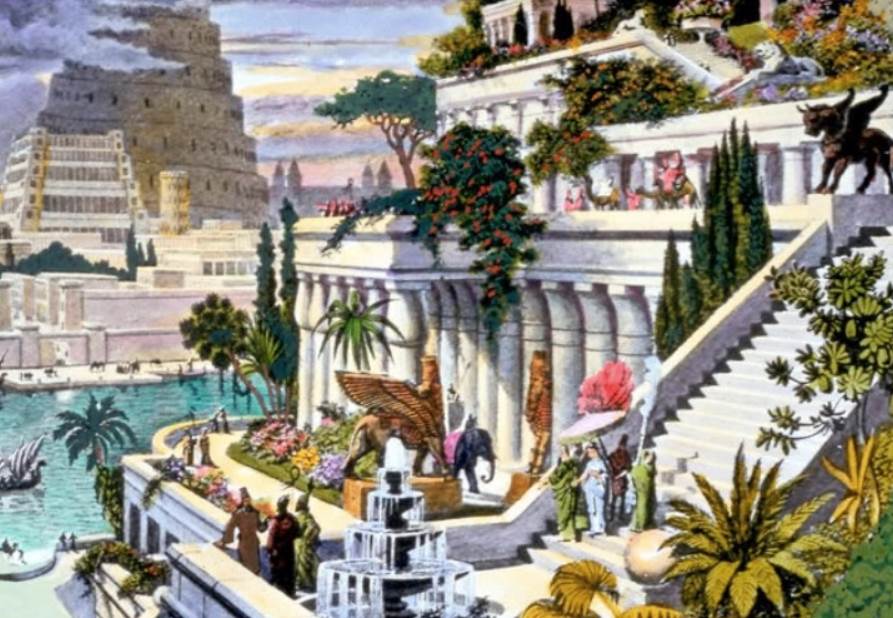
The Great Pyramid of Giza
The Great Pyramid of Giza is the only of the 7 wonders of the ancient world that are still standing. It got an honorary status in the newly created list of 7 new wonders of the world as well.
What makes this monument even more remarkable is that it’s also the oldest of the 7 wonders of the ancient world.
The pyramid was built between the years 2584 and 2561 B.C. and is located in modern-day Giza. It’s part of a much larger necropolis built during the reign of pharaoh Khufu.
The initial building was standing 146.5 meters (481 feet) tall, making it the tallest man-made building for more than 3,800 years (!) until it was surpassed by the Lincoln Cathedral in 1311 A.D.
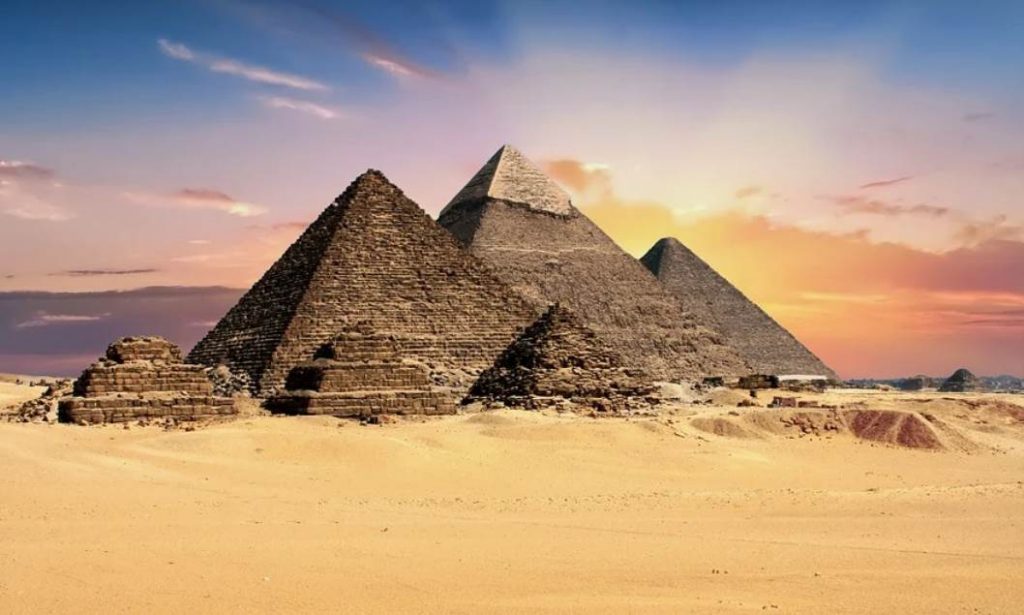
So to answer the question, “What Are The 7 Wonders Of The Ancient World?”, here Here is a summary:
- Great Pyramid of Giza
- Hanging Gardens of Babylon
- Statue of Zeus at Olympia
- Mausoleum at Halicarnassus
- Colossus of Rhodes
- Lighthouse of Alexandria
- Temple of Artemis at Ephesus
